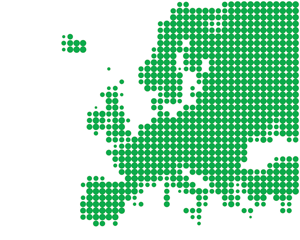What makes a resilient region?
 European regions are most resilient when their economies are diverse and their leaders anticipate change, a Cardiff University study indicates.
European regions are most resilient when their economies are diverse and their leaders anticipate change, a Cardiff University study indicates.
Lessons in how to avoid the worst impacts of an economic crisis (and also how to generate recovery) will be the main findings of a study of European regions carried out by Cardiff University’s School of Planning and Geography over the next three years.
Policy-makers in regional and local government are the study’s key audience, and researchers are keen to hear perspectives from Northern Ireland.
‘Economic Crisis: Regional Resilience’ is financed by the European Observation Network for Territorial Development and Cohesion. The project’s co-leader, Dr Gillian Bristow, told agendaNi that it will consider why certain regions “weren’t as badly affected by the crisis in the first place or, if they were affected, have bounced back and recovered a bit more quickly than others.”
Two themes stand out from the initial literature review. A region may, firstly, have inherent characteristics that may make it more or less resilient. Overspecialising in one sector leads to vulnerability but a diversity of economic sectors is a clear strength. “It’s the old adage of having your eggs in more than one basket,” Bristow commented.
Another set of factors will be related to the actions that regional players take e.g. whether firms are entrepreneurial and take up new ideas, and whether governments are prepared to change their path and diversify the economy into new activities.
“Shocks, I suppose, are an inevitable feature of life now in the globalised world we are living in,” Bristow remarked.
“I think a key theme that resilience gets us to think about is that change is an ever-present feature of the globalised economy. Policy-makers need to be prepared for change and need to, as far as they can, anticipate change and help to develop the economy in anticipation of that change.”
Staff from Cardiff will be joined by others from universities in Germany, Greece, Estonia, Poland and Manchester and will also use data from Experian.
Researchers will look at data for all EU regions, and will also consider neighbouring developed countries. More specifically, they will examine regions in Germany, the UK, Ireland, Italy, Finland, Estonia, Poland and Greece as case studies.
The Irish study may be either sub-national or all-island in nature. However, Wales has already been selected as the UK region, and its post-industrial problems and large public sector bear strong similarities to Northern Ireland. The Welsh public sector, Bristow noted, helped to insulate it from the shock in the financial sector but is now a “double-edged sword” with spending cuts hitting the country hard.
European Commission statistics show that Northern Ireland has a GDP similar to most parts of the former East Germany. Its employment levels are near-average, mainly due to economic inactivity i.e. where a working age adult is not looking for work.
In the most recent EU-wide figures, for 2009, the province’s GDP per capita (€19,500) stood at 83 per cent of the EU average. Its employment rate was
66.1 per cent in 2011, compared to 64.7 per cent for the whole EU.
The same set of figures show the extremes in income across the continent. Regional GDP ranged from just 27 per cent of the EU’s average in northern Bulgaria (€6,400) to 332 per cent in central London (€78,000). The employment rate was highest in Finland’s Åland Islands (78.5 per cent) and lowest in the southern Italian region of Campania (39.4 per cent).
Further information on the research project can be found at www.cardiff.ac.uk/cplan





